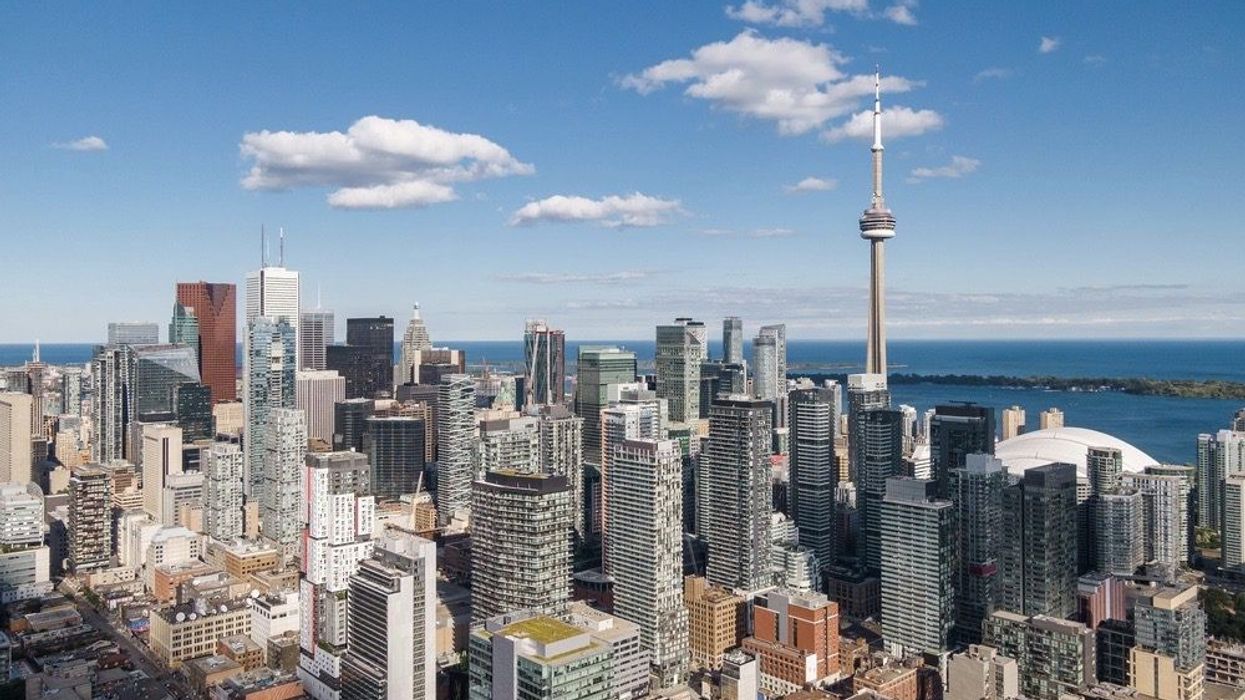Next time you visit the CN Tower, take a look at the skylines around Yonge and Eglinton, Yonge and Sheppard, and Mississauga Centre at Hurontario and Burnhamthorpe. There’s a classic shape to the progression of high-rise rooflines, with a peak at the centre and then a gradual slope downward towards the mid-rise and low-rise neighbourhoods.
This pyramid-like outline is what the World Bank is forecasting cities of the future will look like more and more as people increasingly migrate to major urban centres. In the middle of this community-building model, we’ll see rich and densely populated areas with inhabitants living in high-rise condominiums. As we move away from this zenith, the housing type will transition to mid-rise developments and, eventually, single-family low-rise developments out in the ’burbs.
Naturally, the megacity of Toronto hasn’t followed this typical progression as a whole, which is why you see those mini-pyramids in mid-town Toronto, North York, and Mississauga Centre. There are large swaths of low-rise developments, referred to as the yellow belt, throughout the city. (The term “yellow belt” comes from how single-family residences are labelled with the colour yellow on the map of Toronto’s official plan.) But the cities of the future, if enabled to grow intelligently and organically, will follow the pyramid city-building model because it’s the most efficient way to provide housing and services to people from all walks of life.
Toronto is affectionately called the “City of Neighbourhoods;” perhaps the GTA could be branded as the “Area of Pyramids.” That’s because our push to the outskirts started long ago, and now we’re running out of outskirts within reasonable proximity to Toronto. So, what we’re seeing in typically suburban cities such as Oakville and Milton is an evolution away from single-family home projects and the emergence of multi-phase condominium projects, echoing the towers of downtown Toronto.
READ: The New Downtown: GTA Cities Are Starting to Build Their Own Core Identities
When cities move up and out, public transit growth follows. The Ontario government has committed to ambitious expansion plans across the Golden Horseshoe Region. Same with Montréal. Same with Vancouver. Encouraging and managing density helps cities become more sustainable while allowing them to provide municipal services more efficiently.
It’s far cheaper to build on available land than it is to demolish and build, but the challenge for Toronto is there is very little land available. The only way for Toronto to continue to grow in population -- and grow we will with an anticipated 500,000 residents more by 2030 -- is through achieving greater density. The pandemic and the need to telecommute inspired some Torontonians to leave the city in search of greener pastures, but we’re already experiencing a migration back to the city. As people move back, the availability of housing stock will go down, vacancy rates will decrease, and home prices will rise back up -- making those who recently purchased a home in Toronto feel comfortable with their investment, and making those who still aspire to live here pay a heftier price to make the move.
With Canada’s election campaign now in full swing, we’ve seen strategies to address housing affordability become one of the key points up for debate. The Liberals are campaigning on having introduced a 10-year, $40-billion National Housing Strategy in 2017 to build 100,000 affordable housing units and cut homelessness; the Conservatives are promising to build one million homes over three years; and the NDP is committing to building 500,000 affordable homes over the next decade.
You’ll see the campaigns are more focused on the demand side of the equation than supply, which I believe is the real issue in play. How do we fix the supply issue? Cut and streamline all the excess red tape. To develop a typical tall building in today’s market, it takes 2-3 years to zone alone, then another 4-5 years to build. That means it takes developers around 6-8 years from land purchase to final product. If we want to properly supply the amount of immigration and demand being placed on urban markets like Toronto, Vancouver, and Montréal, we need to shorten the development timeline.
Once we adequately satisfy our supply, pricing will drop and we can put more Canadians into new, more affordable homes.





















